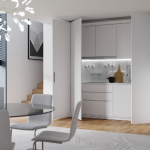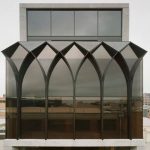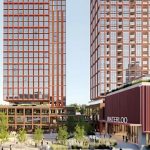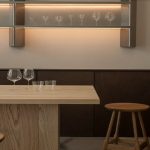Restaurant with 360 Views
360 POA Gastrobar Restaurant is a restaurant-bar complex structured with metal, glass and wood, and a distinctive cylindrical prism design.
This appearance evokes the industrial architecture of the 1930s and 1940s, with the intention of almost ‘leaning’ on the waters of the lake that borders the historic centre of the capital city of Rio Grande do Sul state, in the south of Brazil.
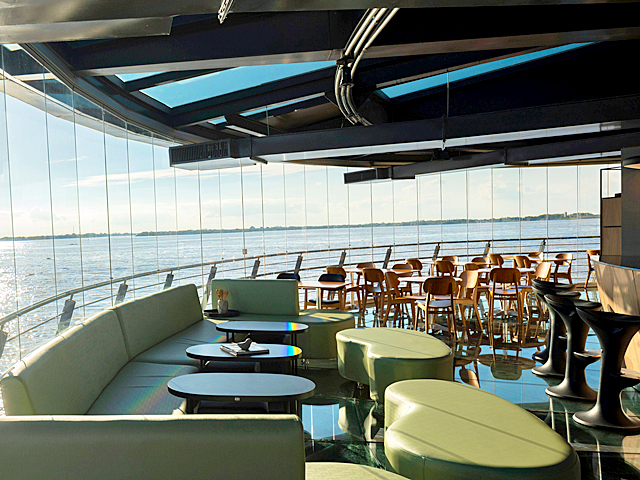
GALLERY
The main structure encompasses the glassy large room, and depicts the technical kitchen and the machine house.
A deck-shaped external plaza is connected to the main architectural element, with the purpose of providing enjoyment of the lake and sunset atmospheres – Porto Alegre citizens’ favourite activity. The external area has been equipped with an operational container, where there is a bar, a warehouse and staff changing rooms.
The restaurant is part of the urban and landscape project of the brand-new public park called Parque Moacyr Scliar, created in tribute to the namesake gaucho writer.
The architectural proposal reveals a light and transparent outline that immerses the estuary water, and exhibits its metal, glass and wood materiality – among which the ceiling, the vertical sealing and the floor are made of colourless glass. The industrial inspiration fits in the original remembrance of the old power station that used to supply the city of Porto Alegre in the past century. Today, the historical heritage of Porto Alegre declares this power station as a cultural centre, with its preserved scenery called Usina do Gasômetro.
Architects Alexandre Viero, Silvia Benedetti and Sheila Bitencourt (Viero Arquitetura e Silvia Benedetti Arquitetos Associados) have been assigned the challenging task of designing the restaurant-bar complex in order to readjust features and add an external plaza. Such project has been conceived in a mutual exchange with PMPOA teams, coordinated by the architect Glênio Bohrer.
The project has also been drawn upon two original assumptions:
- The user experience for appraisal of such beloved landscape
- Appreciation of the surroundings – both scenery and historical heritage (city’s old power station building converted into a cultural centre in the 1990s) and its iconographic relation in the historical centre of the city.
Industrial nature elements have been prioritised with colours and sombre patterns, and sustainable materials have been applied in prefabricated structures in order to optimise execution and provide durability and proximity at the nautical areas of the city’s former harbour.
The building has been designed to simultaneously serve 500 people, taking into consideration the internal and external areas. Besides presenting a 12-metre naval container, it reveals a 342-square-metre plaza with natural wooden decks designed for happy hours and contemplation. The internal area of the room presents 300 square metres, designed for lunch and dinner services.
The project includes landscaping integrated to the park’s pre-existing one. It also includes native plants from Rio Grande do Sul, such as pitangueiras (Eugenia Uniflora, or Brazilian cherry trees) planted in pots, and other Brazilian tree species, such as guaimbés (Philodendrons) that welcome the access to the esplanade.
Via ArchDaily | Images © Cristiano Bauce
Discover the perfect solution for maximizing space and enhancing style with the Exedra and Exedra 2 (Double Bi-fold) ...
Cubitt Street Tower delivers a striking architectural statement, reinterpreting familiar contextual cues to create a dynamic presence within ...
Plans for a $900-million over-station development at Waterloo Metro Station are being revised to remove an office component ...
Swedish designer Gustav Winsth has redefined the traditional showroom concept with his latest project for glassware brand Bobo. ...










